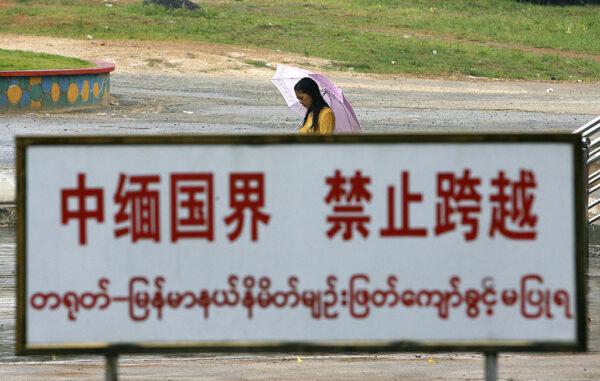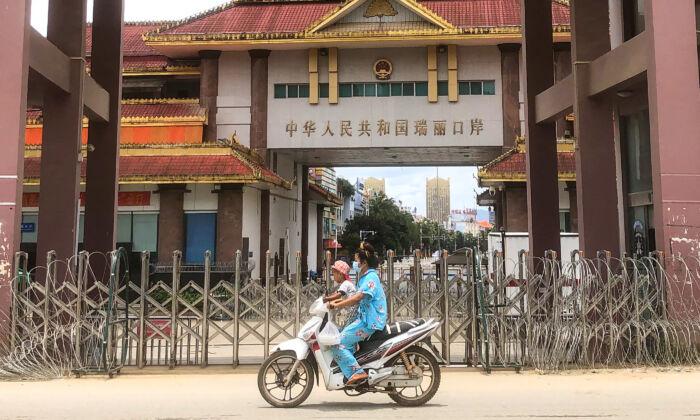Commentary
New Delhi has confronted the Burma government over Indian satellite images of Chinese workers constructing a listening post and extending an airstrip on the Coco Islands in the Bay of Bengal. Burma (also known as Myanmar) has denied Chinese involvement, but Indian officials are concerned that the facility will enable the People’s Liberation Army (PLA) to monitor Indian Navy communications and track missile tests. Burma’s military commander claims there are no PLA personnel on the island, yet he confirmed that Myanmar troops are stationed there. Irrespective of Burmese claims to the contrary, it has been widely suspected that Burma has allowed the PLA to use the islands as a listening post since the 1990s.
Since the military coup in 2021, Burma has been the target of Western sanctions, making the country even more dependent on China for trade and investment. As part of the Belt and Road Initiative and the China-Myanmar-Economic-Corridor (CMEC), Beijing has been investing heavily in infrastructure projects in the country, including building a port, also in the Bay of Bengal, which analysts believe could accommodate PLA Navy ships. With this latest revelation of Chinese Communist Party (CCP) activity, it seems that the Indian Navy and U.S. Seventh Fleet will also have to contend with PLA intelligence-gathering and an airbase in the region.

Bay of Bengal. Screenshot via Google Maps
From a strategic standpoint, establishing a presence in the Bay of Bengal enables China to encircle India. The economic implications are that the CMEC allows China to connect its impoverished Western provinces to the global economy by accessing the Bay of Bengal via Burma. Additionally, the Bay of Bengal provides an alternative for China-bound oil shipments, allowing tankers to bypass the Malacca Straits, a chokepoint that is heavily patrolled by the U.S. Seventh Fleet.
The Straits of Malacca play a crucial role in Beijing’s oil supply, as it is the shortest route from the Indian Ocean to Chinese ports on the Pacific Ocean. If a war between the United States and China were to break out, the Seventh Fleet could easily blockade the Straits, cutting off much of China’s oil supply. The CMEC is creating a direct route from the China-invested port of Kyaukpyu, on the Bay of Bengal, connecting with the Burma–China Oil and Gas Pipeline, which ends in China’s Yunnan Province. The gas for the pipeline comes from both onshore and offshore fields in Burma’s Rakhine and Tanintharyi regions. The pipeline is owned and operated by the Southeast Asia Crude Oil Pipeline Company, a joint venture between China National Petroleum Corporation (CNPC) and Myanmar Oil and Gas Enterprise (MOGE), in which CNPC is the majority stakeholder.

A Burmese woman walks behind a warning sign along the boundary line in the China-Burma border town of Wanding, in China's southwestern province of Yunnan, on Sept. 27, 2007. STR/AFP via Getty Images
Beijing has been a major supplier of weapons to Burma’s armed forces, the Tatmadaw, a way of ingratiating itself and gaining access to the Bay of Bengal. Consequently, over the past few years, there has been increased Chinese activity in the region. In 2018, the Indian Coast Guard apprehended a Chinese fishing boat suspected of engaging in espionage. Last year, the Indian Navy detected a Chinese spy ship, Yuan Wang-6, docking at Hambantota, the China-owned port in Sri Lanka. There was also a suspected Chinese spy balloon that was spotted floating over an Indian Navy base. The Indian Navy has reported that at any given movement there are multiple PLA Navy vessels in the Indian Ocean.
The CCP’s expansion into the Bay of Bengal poses a number of security concerns for both the United States and India. The United States is concerned about China establishing overseas bases in the area, including a missile facility in Bangladesh and ports in Sri Lanka and Burma. Meanwhile, India is beset by the CCP on multiple fronts, having fought skirmishes when PLA troops violated the border in Ladakh, the highest plateau in India. The threat from China has driven India to work more closely with the United States and its partners. Over the past three years, India has been more involved in the Quad grouping, a security agreement that comprises Australia, India, Japan, and the United States. The Quad, which focuses on countering China in the Indo-Pacific, has gained significance since its first national leader summit took place in 2021.
In addition to working together as the Quad, the four member countries have increased their military cooperation in bilateral and multilateral domains. Last November, Japan hosted the Quad members in a joint naval exercise. And in December, U.S. and Indian forces trained together.
Views expressed in this article are opinions of the author and do not necessarily reflect the views of The Epoch Times.





